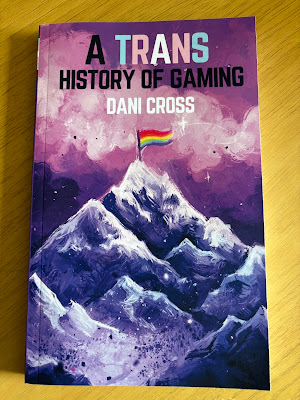Like any art form, video games can be representative of society, yet that representation can often be lacking. In the mainstream, the desire to maximise revenue has often meant a broad spectrum approach to audiences, as well as a "play it safe attitude". However, people always find a way, and when it comes to the subject of trans representation in video games, Dani Cross' self published tome on the subject proves highly illuminating.
Available via the Kindle publishing platform, A Trans History of Gaming delivers an informative, erudite, and often moving guide to trans characters in gaming. Over its 160-odd pages, the author has provided a deep dive into the best, and worst, portrayals of trans personages in video games. Divided into three sections: 1980's to 2009, 2010's, and 2020 and beyond, we start our journey with Birdo from Super Mario Bros. 2, all the way up to Nocturne in Baldur's Gate 3. Each entry gets a character image or in-game screenshot, and a write up detailing their origins, how good/bad their portrayal is, and context within the wider scope of gaming and, crucially, society.
In some instances, the gender of a character is only implied, switched during translation, or added for "comedic" effect, no matter how offensive that might be. Their inclusion within games might be half hearted, or ambiguous, but there are titles within the pages of this book that focus on realistic and sympathetic characters, where gender depiction is a natural facet of the individual. Some games are from traditional mainstream publishers, and there are encouraging signs that they are getting better at trans representation. In other examples, that is less true.
There are a number of indie titles covered too, some coming from trans developers whose personal experiences add emotional depth to their games, not only bringing the player deeper into the story but also increasing awareness of trans people and the challenges they face in real life. The entry for A Year of Springs, for example, highlights Japan's approach to trans people and a disregard for individual rights that is enshrined in law. As an aside, this book also supports my belief that given the near broken state of the AAA games industry, indie developers and the titles they release are pretty much the spiritual heart of video games right now.
With a warm writing style and a wry sense of humour, there is much to enjoy about this book. You will learn more than just about video games, and this is a welcome text on the representation of trans characters that have, in one way or another, been around since the 1980's. The only (tiny) criticism I can make about the book is the slight colour bleeding in my copy, but since this is a Kindle Direct Publishing tome, that is no fault of the author. Indeed, it would be great to see this publication in something like the big format style used by White Owl Books.
A Trans History of Gaming is a great read, and not just for the gaming history. There is societal context as well as finely delivered commentary about inclusion of trans people within the video games industry at all levels. Having a well realised trans character played by a cisgender actor does raise questions, and if (the absolutely brilliant) TV show Sense8 can get it right, then games developers/publishers can too. It may just be that awareness needs to be raised, and this fantastic book is a brilliant place to start.
You can pick up a copy of A Trans History of Gaming direct from Amazon here, as well as follow the author on Twitter/X @DaniCross_




No comments:
Post a Comment